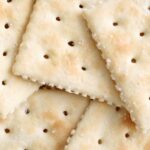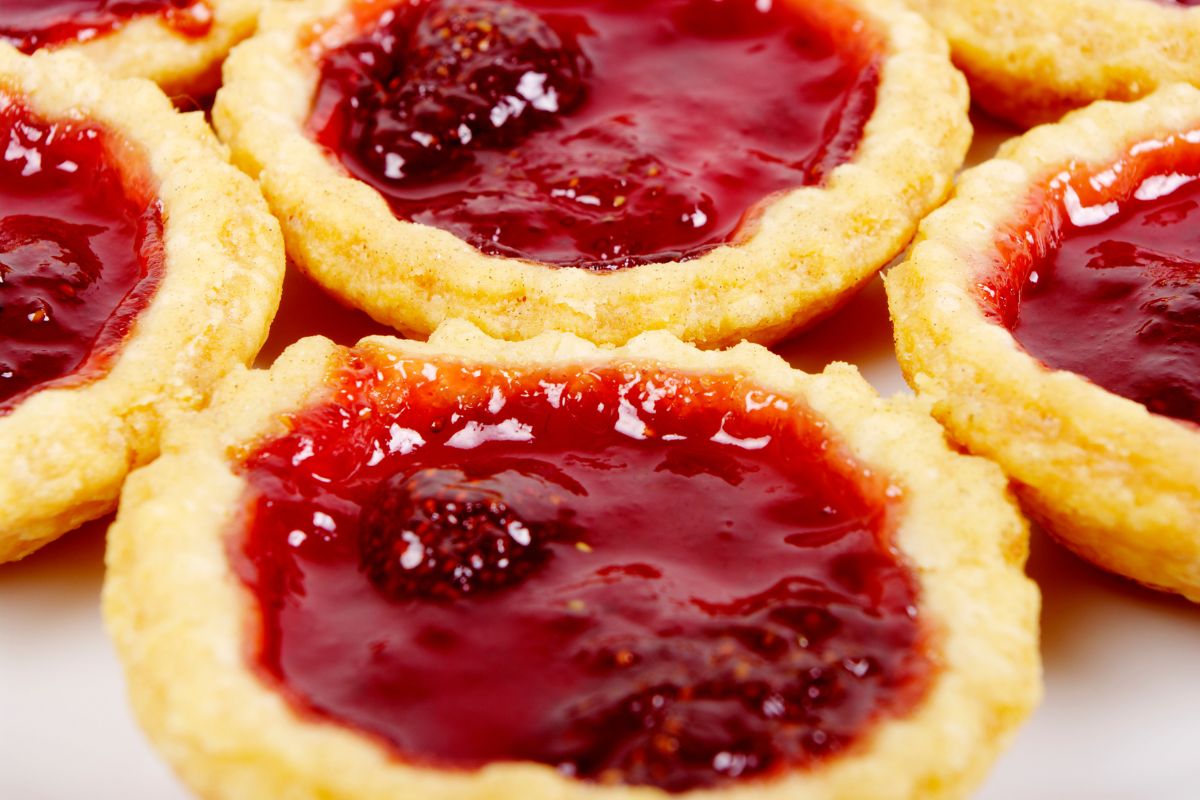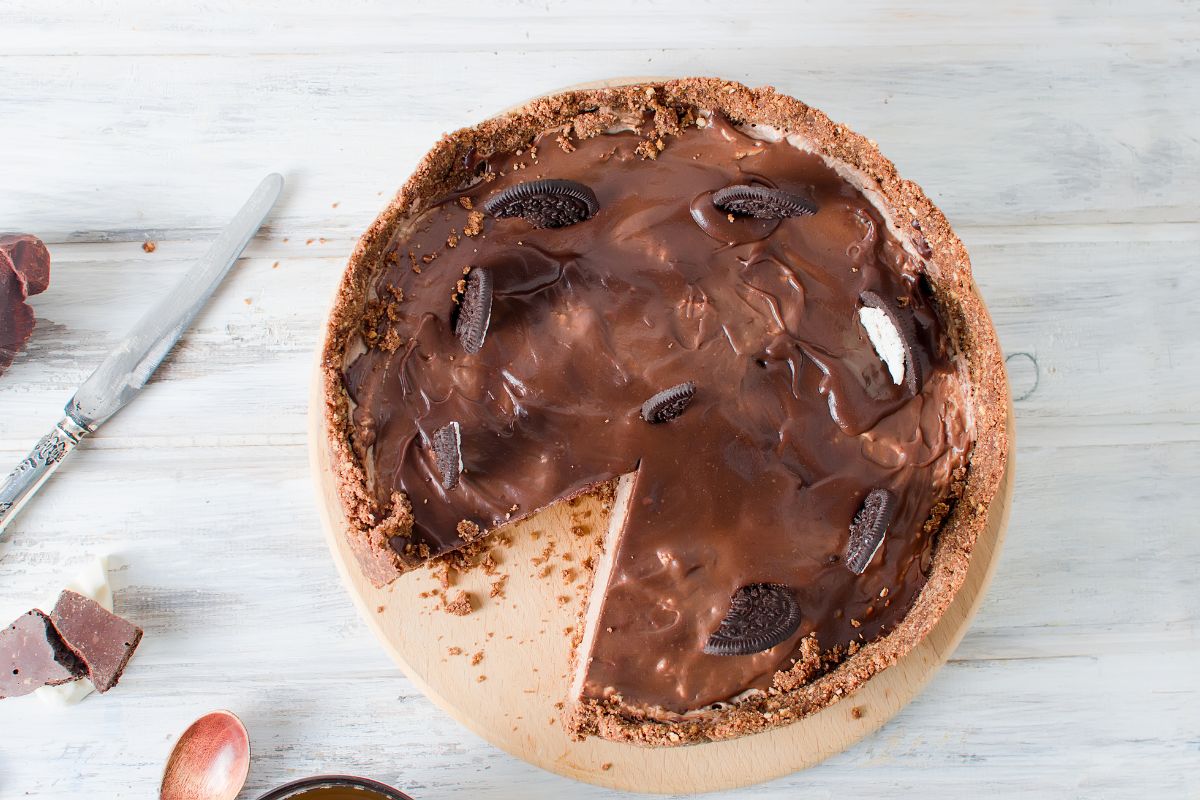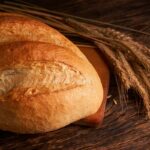A rooftop patio in Paris with views of the Eiffel Tower is the perfect place to enjoy warm, flaky croissants, extra butter & jam, coffee, and freshly-squeezed orange juice.
The breakfast of champions, right there! However, have you ever pondered how croissants are made? Particularly when it comes to learning how to create croissants with puff pastry, French baking is no joke.

It’s true that French cuisine depends heavily on la boulangerie (baking) and la pâtisserie (pastry).
To produce the best completed result, components must be precisely measured and thoughtfully blended, as every baker is aware, and the French elevate this attention to a completely new level.
Dough that has been laminated forms croissants. The croissant dough and traditional puff pastry differ primarily in two ways:
- Puff pastry doesn’t include any yeast but croissant dough does.
- To manufacture puff pastry, you have to produce 5 single turns, while to create croissants, you only need 3 single turns.
One more crucial point: it will take at least two days to prepare your croissants perfectly. Your yeast dough must first be prepared and chilled overnight.
The turns must be made on the second day, and when the dough has rested, croissant-making can begin.
This article will teach you how to make perfectly delicious croissants using puff pastry! Just follow the simple instructions below to create an amazing breakfast. But first, let’s learn a little bit about croissants and puff pastry in general.
The History Of Croissants
The croissant’s origin is unknown or, to put it mildly, indeterminate, as is customary throughout the history of food.
However, it appears that all historians concur that the kipferl, a crescent-shaped Vienna biscuit generally made from ground nuts, was the forerunner of the croissant.
One claims that the kipferl, which is shaped like the Islamic crescent, was created in Europe to commemorate the Franks’ victory against the Umayyad Caliphate armies in France in 732.
Another legend claims that the same thing happened in 1683, when the city of Vienna, Austria, was under attack by the Ottomans.
A baker from Vienna is said to have heard the Ottoman forces excavating a tunnel into the city and alerted the military, who then destroyed the tunnel and rescued the city.
So they made the crescent-shaped cookie and gave it the name “kipferl” to commemorate the Ottoman armies’ loss.
As we move into the 19th century, there is yet another story that an Austrian military officer named August Zang established a bakery in Paris in 1838 or 1839.
This bakery served traditional Viennese fare like the kipferl, which the French renamed the croissant because it resembles a crescent. It is crucial to stress that this wasn’t a croissant in the modern sense, as it was not composed at all of puff pastry.
However, a French baker who published a recipe in 1915 that clearly references puff pastry with yeast, was the first to allude to a croissant centred on puff pastry.
Various croissant recipes started to arise in the decades after Zang’s shop opened. Let’s have a look at what exactly puff pastry is.
What Is Puff Pastry?
A dough created by alternately layering butter and dough, is used to make puff pastry, which is a delicate and flaky pastry. There are no leavening agents needed while making puff pastry; the only components are butter, flour, salt, and water.
Puff pastry requires a lot of work to make from scratch. Several tiers of pastry dough are created by enveloping a chilled slab of butter within dough, spreading it out, turning it over, and continuing this process.
Not to mention that the process takes a long time because the dough has to chill in between each rolling and folding motion.
The layers puff as a result of the butter and dough’s moisture evaporating in the oven. The golden hue and crisp texture of the dough are a result of the butter melting into it. Although the French perfected the method, bakers from over the world now use it.
Many people decide to forgo cooking puff pastry by hand in favour of the store-bought variety accessible in the freezer section due to this laborious process.
Whether you use store-bought or homemade pastry, the end result is a flaky, buttery crust with a hint of crunch. Everything from pinwheels and turnovers to beef Wellington and palmiers use it.
Phyllo Dough Vs. Puff Pastry
It’s simple to mistake phyllo, a type of layered dough, for puff pastry. After all, the same materials are used to make each of them.
The fundamental difference between these two is that phyllo dough is expanded and layered, as opposed to puff pastry’s rolling and folding. Additionally, it has less water than puff pastry, which prevents it from rising as much.
The name phyllo dough comes from the fact that the sheets are practically as fine as a leaf. In most of the Middle East, including Greece, Turkey, and Turkey, phyllo is a staple.
As with puff pastry, it can be purchased in the freezer section and is probably best known for its use in baklava.
Where Can You Buy Puff Pastry?
In the frozen department of most supermarkets, puff pastry sheets are packaged in a long, rectangular box. Because sheet sizes might vary, be sure to check the box’s measurements.
You can frequently find puff pastry next to pie crust as well as other frozen doughs.
Additionally, pre-made pastry cups for delicate desserts and savoury appetisers could be available. Always keep a packet of frozen pastry on hand for quick, last-minute baking.
How Should You Store Puff Pastry?
Puff pastry from the store should be kept in your freezer until used. Follow the thawing directions on the box to use.
Puff pastry made from scratch can be frozen for up to one month or kept in the refrigerator for a few days. Be careful to tightly rewrap whatever you aren’t using in plastic wrap.
Additionally, uncooked pastries can be kept in your freezer for a maximum of two weeks if they are kept in an airtight container. They can go directly from your freezer to the oven once you’re prepared to cook them.
How To Make Croissants With Puff Pastry: Step-By-Step

Ingredients
- 1 sheet of puff pastry, thawed per the instructions on the package)
- 3 tablespoons of butter
- 1 1/2 teaspoons of sugar, granulated
- 1/4 teaspoon of cinnamon, ground
- 1 lightly beaten egg
Directions
Step 1
Preheat the oven to 400 degrees. Use silicone baking mats or parchment paper to line a baking pan.
Step 2
Unfold the pastry dough. Make 4 equal squares out of the dough, then slice each square diagonally to create 8 triangles.
Step 3
Place each triangle you create so that, like a 90-degree triangle, the wide side is towards you and the tip is away from you. Put about 1 teaspoon of butter in the middle.
Step 4
Pinch the dough together so the butter doesn’t drip out when you stretch the dough from the broad end to the point. Move to the baking sheet, then form a crescent shape by curling the ends toward the centre.
Step 5
Repeat the above steps for the rest of the triangles.
Step 6
The cinnamon and sugar should be combined in a small bowl. Each croissant should be egg-brushed before being dusted with cinnamon sugar.
Step 7
Bake for 12 to 15 minutes, or until brown and puffy. Serve either at room temperature or heated.
Extra Tips For Baking With Puff Pastry
- Up to 6 months of puff pastry storage in its original packaging is possible in the freezer.
- Take out only the necessary number of pastry sheets. Unused sheets should be covered with foil or plastic wrap and put back in the freezer.
- Puff pastry has an 8-fold maximum expansion capacity. This implies that even a sheet that has been rolled to a thin 14-inch thickness will rise by 2 inches.
- Rolling pins, pastry boards, pizza wheels or sharp knives for cutting dough, pastry brushes, baking sheets, and parchment paper are useful puff pastry tools.
- If you do not own a brush, you may apply egg wash with the tip of a paper towel that has been tightly folded up or your fingers.
- Puff pastry performs best when it is cold; heat is its worst enemy. Therefore, stay away from using it on hot days, in a sweltering kitchen, or close to your oven.
- When handling it, your hands ought to be similarly cold. To chill them off, submerge them in cold water or press an ice-filled plastic zipper-top bag over them.
Final Thoughts
We hope that you enjoyed learning how to make delicious croissants with puff pastry.
This delectable dish makes an excellent breakfast and now that you understand how to make them from scratch, you can continue baking tasty, warm croissants for breakfast for many years to come!
- How To Reheat A Cheesesteak - November 5, 2023
- What Are Three Must Have Kitchen Knives? - September 22, 2023
- How To Protect Edges Of Pie Crust - June 15, 2023








